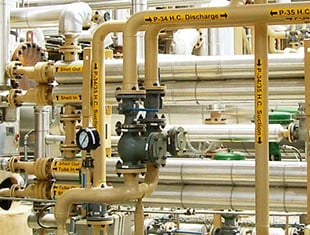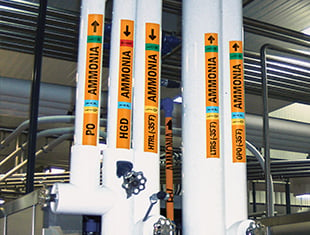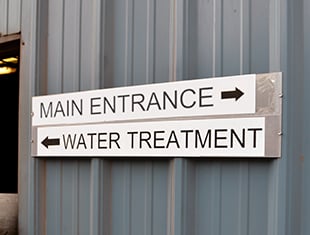Productive Floor Marking
Webinar | Productive Floor Marking
Productive Floor Marking
Maximize efficiency with productive floor marking
- Plan and install a custom floor marking system
- Use floor tape to support 5S, wayfinding, and other systems
- Get tips for effective floor tape placement
 17 MINS
17 MINS Presented By

Brian McFadden
Technical Writer
Compliance Specialist
Transcript
Webinar Preview
Contents of the Productive Floor Marking Webinar:
- Why Floor Marking?
- Floor Marking and 5S
- Step-By-Step Floor Marking
- Lean Manufacturing and Kanban
- Visual Wayfinding
- Where to Go
- Where Not to Go
- Implementing Floor Marking
- Creating a Floor Marking Plan
- Making It Happen in the Real World
Excerpt from the Productive Floor Marking Webinar transcript:
Why Floor Marking?
As a Compliance Specialist, one of the questions I hear repeatedly is "What are OSHA's rules for floor marking?"
While OSHA has several important rules touching on the ideas behind floor marking, they're not as extensive as you might think. For instance, the walking and working surfaces standards in 1910.22 require that permanent aisles and passageways be permanently marked, and that safe clearances are allowed where equipment will need to pass through. The emergency exit rules in 1910.36 includes requirements for minimum width of exit routes. These applications don't necessarily require floor marking, though - they're focused on practical goals, and floor marking is just one effective way to work toward those goals. OSHA doesn't have a specific requirement for floor marking to be used at all.
That's an important point: floor marking isn't some arbitrary requirement! It's a tool for achieving goals of organization, efficiency, and safety. Using that tool effectively can provide great benefits for your facility and your employees. So it's not a question of "What do I have to do?" - it's "How can I improve my facility's bottom line?"
There are several popular approaches for improving efficiency and productivity in a workplace, and effective floor marking can help many of them succeed. Today, we'll talk about three of the most popular approaches:
. 5S,
. Lean Manufacturing with Kanban,
. and Visual Wayfinding.
We'll also cover how to plan out a custom floor marking system for your facility, and how to implement that plan for the best possible results.
Floor Marking and 5S
5S is a system of organization and cleanliness that helps facilities operate efficiently. It's named after the five steps of the process, which all begin with the letter "S": Sort, Set In Order, Shine, Standardize, and Sustain. 5S was originally developed in Japan, so the choices of words in English can vary. The main ideas are the same, though:
. Sort involves identifying what's needed in a given workspace, and removing everything that isn't needed there;
. Set in Order means assigning clear and specific places for the equipment and supplies that remain in a workspace;
. Shine is keeping the area clean and clear, preventing junk buildup and simplifying inspections and maintenance;
. Standardize means to formalize the new way of working, making it easy to measure and share;
. and Sustain keeps applying the 5S sequence over and over, and measuring the results, as part of a continuous improvement plan.
Step-By-Step Floor Marking
When implementing 5S in a facility, floor marking can be an incredibly effective tool.
For example, when the Sort step determines that an item isn't needed in a given workspace, a red tag is placed on that item, and it's put in a central location so other teams can decide if it would be helpful in their areas. These "Red Tagged" items have to be kept out of the way, but they also need to be somewhere workers are likely to see them and understand what's going on. A designated Red Tag Area makes perfect sense for this purpose, and outlining that area with floor tape can be the best way to keep it visually identified.
In the Set in Order step, storage areas for large equipment, supplies, and materials can be easily set apart with floor marking. One classic example is making "parking spaces" for forklifts. If multiple teams use some of the same equipment, having a marked storage location for it will help ensure that people don't waste time looking for something that's already being used. It also encourages workers to put the equipment back when they're done using it.
Floor tape can also identify different work zones so each team of employees knows exactly which areas are their responsibility for the Shine step.
Having these kinds of floor markings in place gives you a head start in the Standardize step as well, because you can easily document where different steps need to happen. It's easy to tell a new worker, "When this cart is full, take it down to the next step in production, and put it in the space with the blue outline."
To learn how effective floor marking can improve your facility's organization, efficiency, and safety, watch the full webinar on demand now!
Related Resources

Practical Pipe Marking
Presented By Brian McFadden Technical Writer Compliance Specialist Related Resources Ammonia Pipe Marking ...
Watch Now
Ammonia Pipe Marking
Presented By Brian McFadden Technical Writer Compliance Specialist Related Resources Ammonia Pipe Marking ...
Watch Now
Effective Wayfinding In Your Facility
Presented By Brian McFadden Technical Writer Compliance Specialist Related Resources Facility Visual ...
Watch Now.png)





